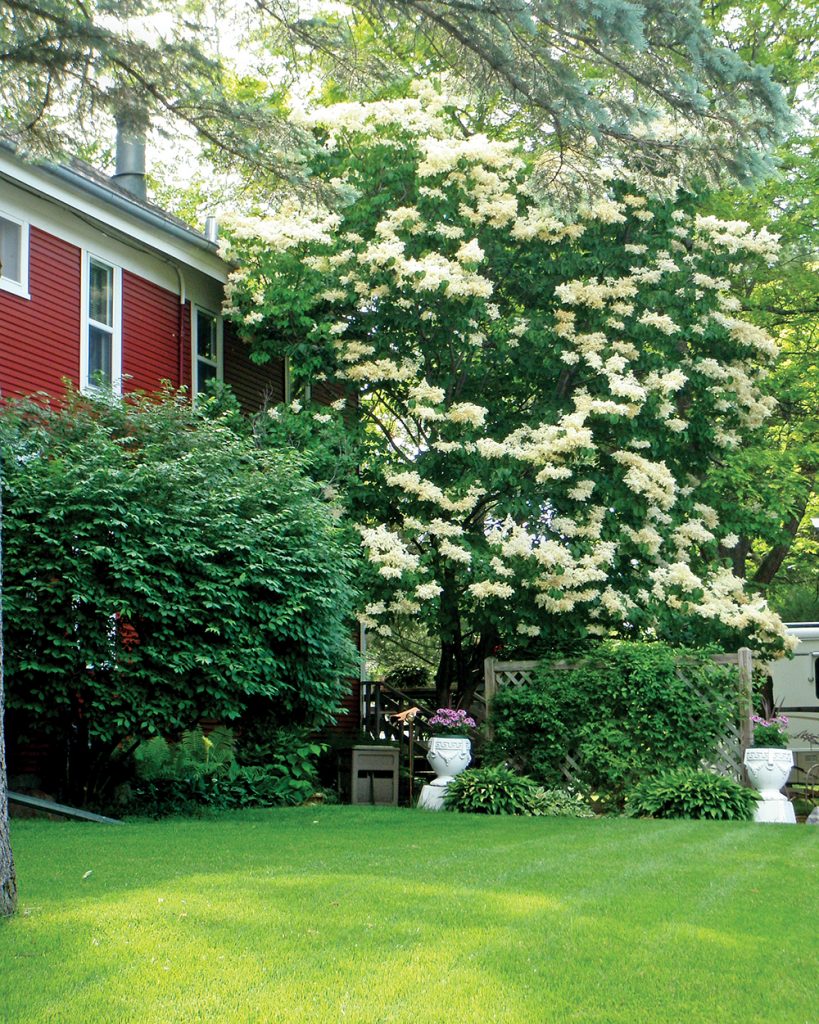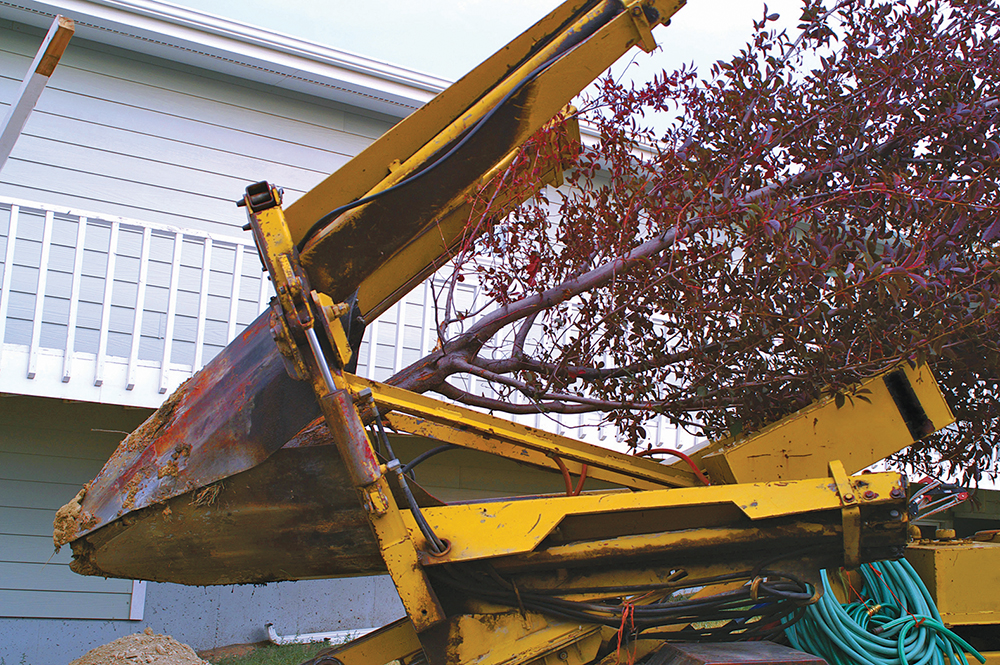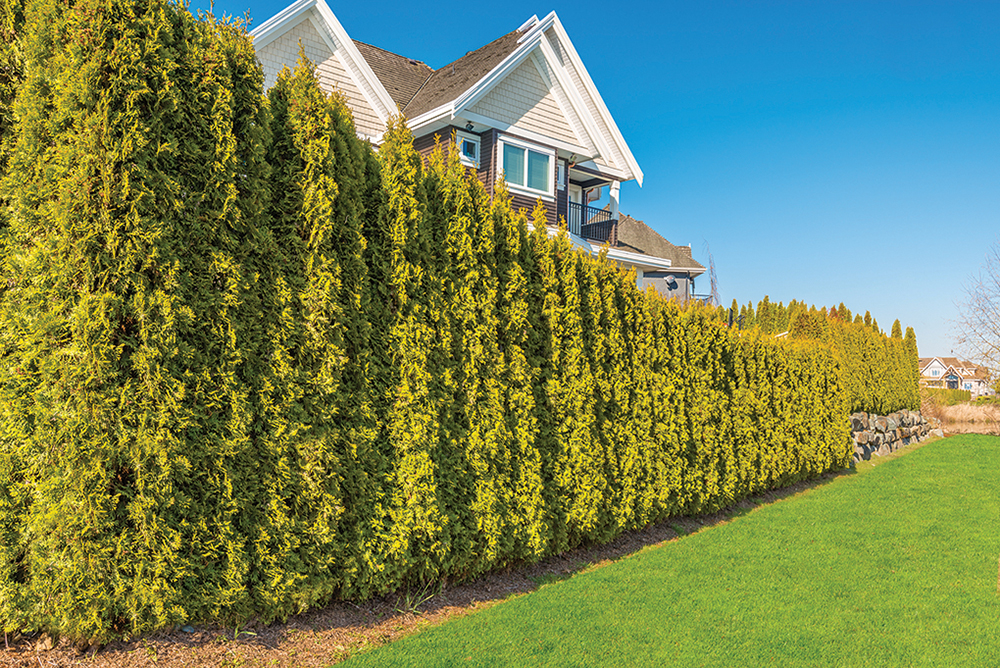Everything you need to know about choosing, planting and caring for trees on your property
by Judy Ross
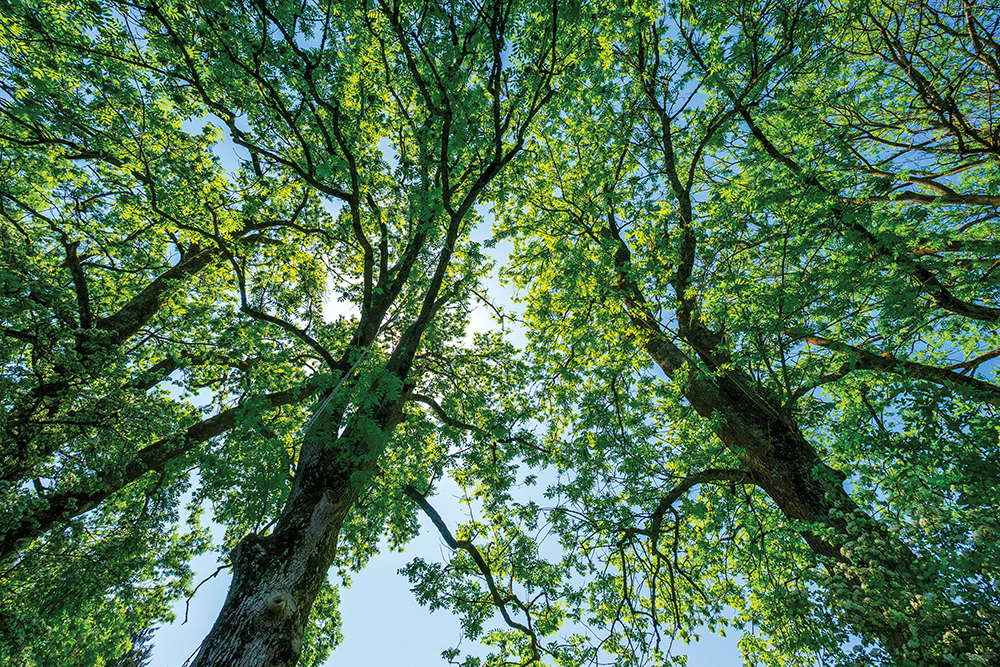
I think that I shall never see
A poem lovely as a tree.
A tree whose hungry mouth is prest
Against the earth’s sweet flowing breast;
A tree that looks at God all day,
And lifts her leafy arms to pray;
A tree that may in Summer wear
A nest of robins in her hair;
Upon whose bosom snow has lain;
Who intimately lives with rain.
Poems are made by fools like me,
But only God can make a tree.
Trees
by Joyce Kilmer, 1913
I became interested in trees when we moved to one of Collingwood’s ‘tree streets’ last year. These streets, which run north to south in the downtown core, were named eons ago by the town founders – Pine, Maple, Beech, Birch, etc. – and houses on these well-established tree streets are now considered prime real estate.
The irony is that some of them have no trees at all. Ours was a case in point. Although our back yard was shaded and leafy with a selection of mature maple and walnut trees, the front yard of our newly built home was barren. We needed some trees there.
And so the research began. We wanted to plant a large-ish tree to suit the size of the front lawn (and our lack of patience for long-term growth). That’s when I discovered that big trees mean big money. Buying a large, mature tree can cost thousands of dollars. The cost comes from the labour and the equipment required; transporting a large tree to a property requires a very large truck with a ‘tree spade’ mounted on its back. Then there’s the access issue, especially with back yards. This monster equipment has to be able to squeeze onto your property, possibly chewing up any existing lawn or garden beds.
For our front lawn tree, we ended up taking the advice of Teresa Matamoros of Garden Holistics in Thornbury, whom we had contracted to do some landscaping. She considered the site, the need for shade or privacy, and the condition of the soil. After examining different options, her firm transported and planted a Robinia pseudoacacia (black locust) ‘Purple Robe.’
“This species of tree is drought tolerant, grows reasonably quickly and does well in poor soils,” Matamoros told us. “It will grow to be about 12 metres tall with a seven- to eight-metre spread and it has fragrant pink flowers that bloom in the spring.”
Our new tree was 80 mm caliper in size. Deciduous trees (those that lose their leaves in the fall) are measured by trunk diameter rather than height. A tree caliper is a special device that measures the diameter of a tree’s trunk one foot from the ground. This caliper measure is used because it’s more reliable than the heights of these trees which can vary dramatically.
The most common size of potted tree found at nurseries and landscape companies is 40 to 45 mm caliper. But a 40 to 45 mm tree, no matter what its height, is still bigger than most homeowners can manage on their own; it comes packaged in a burlap and wire basket and can weigh up to 450 pounds.
A small trailer or a pick-up truck will be required to transport it and it will be difficult to handle. Ideally you will make arrangements with a professional to bring the tree to your property and plant it. For very large trees you need a tree transporting service like Clarke’s Tree Spade Services in Meaford. They have four different sizes of tree spades and can move trees up to 12-inch caliper.
Even a 40 to 45 mm tree will take a full year to get established and acclimate to its environment. With so many weather variables, it’s hard to have exact guidelines for maintenance. As general rule, a newly planted tree needs watering every day for the first week, then every second day for the second week and twice a week for the remainder of the season. Spring (May or June) is a good time to plant but only if you’re around in the summer to do the maintenance. An in-ground sprinkler system can be set up to water the appropriate amount, but often the best way to find out if your new tree needs water is to simply stick your fingers into the ground.
There’s a different measuring system for evergreens, according to Michael LaPorte, manager of Clearview Nursery in Stayner. “These trees are also packaged in burlap and wire baskets but are measured by height taken from the ground level to the middle of last year’s growth. The range of evergreens we offer is from four feet to 10 feet and these will weigh from 250 to 1,500 lbs.”
Because mature trees can increase the value of your property by up to 15 per cent, they are a worthwhile investment.
While it’s true that bringing in large evergreens will give your property the instant visual appeal of a more mature landscape, these large trees take a long time to get established. You may not see growth for three to five years because the tree will spend the first year re-establishing root growth before energy can be spent on the ‘top’ canopy growth. Larger trees (both deciduous and evergreen) are also more prone to ‘transplant shock,’ which can make them susceptible to drought, diseases and insects.
“We find that evergreens don’t do as well if planted in the fall,” says LaPorte. “They don’t like the freeze and thaw cycles that are typical of winter now. However, we have had great success with fall planting of deciduous trees. After one thorough initial watering, the tree can often be on its own until mid-June.”
Because mature trees can increase the value of your property by up to 15 per cent, they are a worthwhile investment. If you don’t mind the wait for trees to mature, then choose a selection of smaller ornamental trees and shrubs from a reliable nursery that you can plant on your own. “Most customers can purchase, transport and install any of our potted plants,” says LaPorte. “This includes standards (shrubs grafted on a stem), fruit trees and some ornamental trees such as Magnolia and Japanese Maple.”
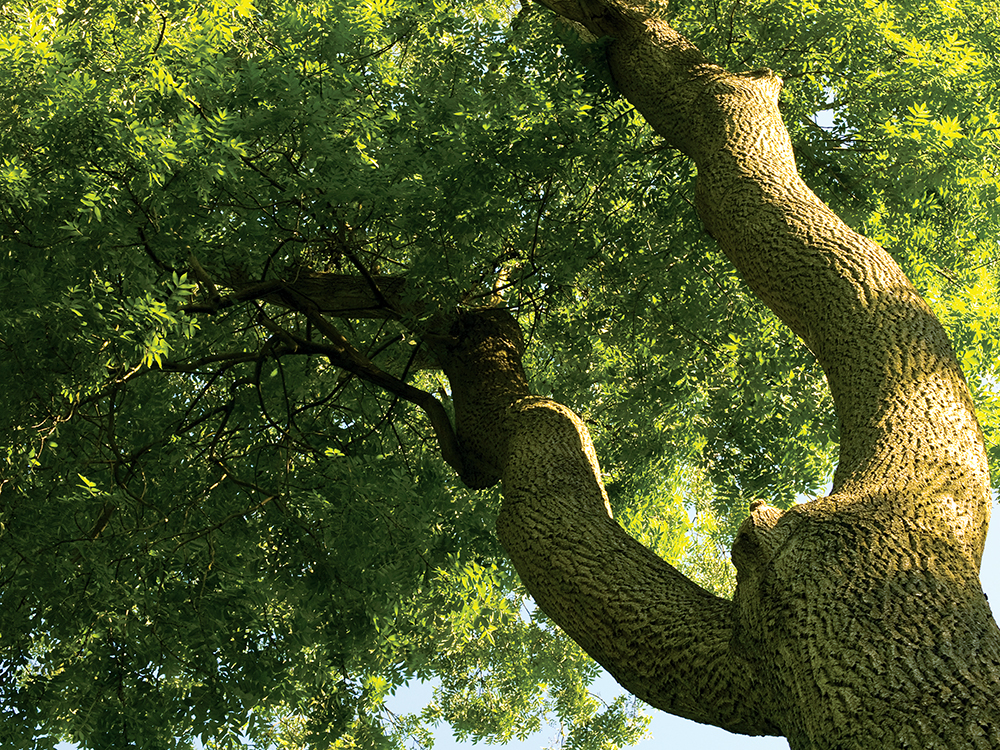

The type of tree you choose must be compatible with your soil type and hardiness zone, must be positioned to get the required amount of sun, and must have good drainage. For placement near your house or driveway, it’s important to know what the mature size will be. A good rule of thumb is to plant a tree away from the house at a distance equal to half of the maximum tree height. For instance, if a tree will grow to be 40 feet tall at maturity, it should be planted at least 20 feet from the house.
Matamoros says diversity is most important when choosing trees for a property. “At this time of climate change, I look to diversity to avoid monoculture,” she explains. “There is a strong movement toward native trees and plants as they are the best choice for our pollinators (a native species is one that existed in Ontario prior to European settlement). However, with many foreign pests and diseases being introduced to our native trees (like the Asian Long Horned Beetle and the Emerald Ash Borer), I am looking to something similar but different for our gardens and parks. There are so many different kinds of trees out there that we can broaden our palette of what we plant.”
The lovely old trees on Collingwood’s tree streets are native ones and some are suffering from these foreign pests. Planted long ago – some more than a century old – many of these trees are on boulevards between the street and the sidewalk, which are town property and therefore publicly owned. If there’s an issue requiring the tree to be removed, the town will take care of it.
Right now there’s a problem with Ash trees. An invasive species known as the Emerald Ash Borer (EAB) is killing these beautiful trees. When the town’s public works department sprays an Ash tree with a yellow X, it means that it’s likely to be killed by EAB and will need to be removed. A green dot means it might be saved and will be injected with TreeAzin, a method of protection. A red X means the tree has no hope and will be removed soon, usually because it’s in a hazardous position where it might fall over onto a sidewalk or trail. The town does replace the trees that are removed, currently planting about 125 new trees every year.
We have a wide grass boulevard in front of our house between the road and the sidewalk and we found out that, because the town owns that land, we could get a tree or trees planted for no charge. We contacted the public works department to get an inventory of the trees available. They need to consider the mature size and whether the utility lines are on that side of the street. From our available options we chose two Ivory Silk Lilac trees (also called Japanese Tree Lilac) which grow to about 30 feet (we do have those overhead lines) and will produce large white fragrant flowers each spring.
Whether you’re planting trees as part of your landscaping or maintaining a woodlot on a larger property, there’s no question that trees make the world a more beautiful place.
The importance of trees has been making news far beyond our Southern Georgian Bay borders. In January at the World Economic Forum in Davos, Switzerland, a ground-breaking initiative was unveiled. Leading governments and businesses vowed to plant, grow and restore one trillion trees worldwide.
Here in Collingwood the town is waking up to the value of a healthy tree canopy. Consultants have been working with council to develop an Urban Forest Management Plan and have provided more than 40 recommendations to help the town increase, diversify, protect and maintain its urban forest. One of the most crucial recommendations is to value our existing trees and plant new ones on public and private land. The future for our trees is looking better than ever.
Whether you’re planting trees as part of your landscaping or maintaining a woodlot on a larger property, there’s no question that trees make the world a more beautiful place. According to TreeCanada, a registered charity dedicated to planting and nurturing trees, “They provide us with many lasting benefits: shade, privacy, increased property value, shelter and food, and they contribute to our mental well-being. Planting trees is one small way each of us can help improve the environment.”
No wonder poems are written in their honour. ❧
Maple Leaves Forever
Our national symbol and the centre of our Canadian flag is a stylish drawing of the leaf of a sugar maple. But these native maple trees are endangered and disappearing from the rural landscape in Ontario.
This rapid decline of sugar maples is happening all over northeastern America and is also creating a crisis for maple syrup producers. It’s a concern for all of us who care about our beautiful maples, the trees that give our fall foliage its distinctive yellow, orange and red radiance.
A charitable foundation called Maple Leaves Forever (MLF) is determined to make the public aware of the importance and benefits of planting native Canadian maples. The organization currently offers a thank-you rebate for eligible purchases of native Canadian maple trees to be planted along rural roadsides, laneways, property boundaries and hedgerows.
MLF also provides information and guidance regarding the planting and ongoing care of these trees, and works with seed collectors and tree nurseries to ensure that a supply of certified, native, seed zone specific sugar, red and silver maple seedlings is available to be grown into saplings and trees.
Clearview Nursery in Stayner is a member of the organization. “When you buy the maple trees from us, you submit the receipt to MLF and they will partially reimburse you,” explains general manager Michael LaPorte. Triple J. Tree Farm in Creemore is another local ‘nursery partner.’
Maple Leaves Forever also owns a professionally managed, sustainably renewable woodlot certified by the Forest Stewardship Council.
For more information, visit mapleleavesforever.ca
10 Reasons to Plant a Tree
- Landscaping with trees increases your property value and adds curb appeal. A mature tree can have an appraised value of up to $10,000.
- Trees make neighbourhoods more sociable, add privacy, and remove pollutants and carbon dioxide from the air. Evergreen trees help buffer sound from outside noise.
- Trees with broad canopies provide shade and will save energy, allowing you to cut down on your air conditioning bills. The roots of trees absorb moisture and help reduce storm water runoff.
- Planting evergreens is a good way to ensure privacy in all seasons, and realtors say privacy is a key issue with prospective home buyers. Trees can also be planted to hide an undesirable view.
- Trees soften harsh landscapes and add dimension to a property. Evergreens add winter interest and protective shelter for birds. Planted close together, they can form a hedge for your property line.
- If trees are planted on the north or northwest side of your property, they will create an energy-saving wind break; a wall against cold winter winds. This can help lower heating costs.
- Flowering trees provide berries for birds, blossoms for bees and butterflies, and wonderful fragrance for everyone.
- Trees provide food. Some trees, like dwarf fruit trees, will offer up fruit three to five years after planting.
- Memorial trees can be planted in some public places to honour an event or a loved one. You can choose a location (the Arboretum, Sunset Park etc.) and the planting is taken care of. A fee of $500 includes the tree, planting and a personalized plaque. You also receive a tax receipt and the tree is guaranteed for life.
- Managed woodlots on country properties are beneficial in countless ways. An acre of trees annually absorbs the amount of carbon dioxide equal to driving your car 26,000 miles.









